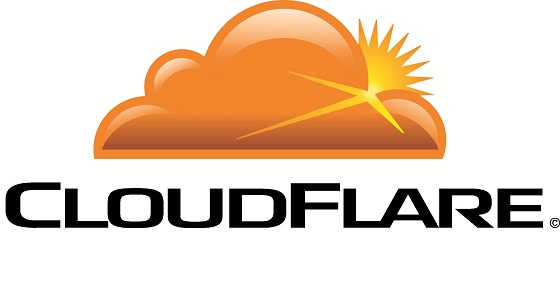The era in which we are living today is the beginning of a “tech era” , where a human being needs everything right from a phone call to buying a sweater at a mere touch on a screen. In this fast era when we browse for a page on the Internet, we also expect the page to be at our service as quick as possible. But sometimes it fails do so. And we cannot afford it, since Time waits for none. Hence CDN has been devised as a remedy. CDN is a widespread system of distributed networks or servers which provides the requested content to the end client with high performance and availability. Since CDN also offloads the traffic from the original server that publishes the content, it even protects against large surges of traffic. CDN delivers a large amount of pages covering many fractions of content today like the web objects such as texts, URLs, scripts and graphics, objects such as media files or software documents that can be downloaded, social networks and many more. Thus basically CDN serves the end clients with a rich and highly distributed network that helps them to use their requested web pages containing all kinds of contents with ease and convenience.
How does CDN work?
Since the main objective of CDN is to speed up the process of page load, enhance the availability of a page globally and reduce the cost of bandwidth, CDN’s architecture is deployed in a fashion that there are multiple nodes fixed at different locations. When a client requests for a page, these requests are algorithmically diverted to the nodes according to some prioritized manner. For instance, if a page needs quick loading speed, nodes that are nearest to the requesting client are chosen, or the nodes that are highly available are chosen. But when priority is on the cost, the cheapest node is selected. For delivering the contents CDN augments the already equipped client to server mechanism of Internet with a more integrated technique including distributed servers using Web Caching, Server-Load Balancing and Request Routing. Let’s see how CDN effectively puts all of these into one functional unit.
1. Web Caching: Web Caches of CDN is a format to store the pages that receives the maximum number of hits in context to the users demand, and the nearest CDN serves the client with these pages from the cache thereby reducing the load time and bandwidth requirement.
2. Server-Load Balancing: Server-load balancing equips the multilayer switch technique in order to distribute the traffic amongst different caches. A single virtual IP address is assigned to a switch which on receiving the traffic directs them to one of the many original servers attached to it.
3. Request Routing: Request routing uses various algorithms to judge the priority of a request and direct it to the correct node based on whether the request prioritizes on the immediate availability or on the cost. The various algorithms used by Request Routing are DNS based request routing, Global server load balancing, HTML rewriting etc.
When a visitor visits a published website that takes a long time to load, the visitor gets impatient and prefers heading towards some other site. Deploying CDN can solve this problem easily but smaller websites cannot afford a CDN. Hence there are some CDNs that have entered into the scenario to confront the massive responses. Following are the examples of such CDNs.
Some popular CDN services
1. CloudFlare: Cloudflare is a CDN based on distributed DNS service. It claims to reach the masses by reducing the page load time and protecting against web attacks. It proffers both free and paid services.

The paid service has a more advanced security along with real time lookups. It uses the technology from Cisco called AnyCast. One can include it in one’s site within 5 minutes and gain the benefits of increasing the site loading speed by 30% and protecting the site from web attacks. Since it operates on network level, it is platform independent. After integrating CloudFlare on the site, one can go to the control panel and check how many requests from one’s site has been served by CloudFlare and how much bandwidth has been saved. CloudFlare is a fantastic option for small website publishers since it offers with some of the basic but extremely valuable service free of cost.
2. MaxCDN: For Bloggers and WordPress users, MaxCDN is one of the best options to enhance the SEO, reduce the page load time and increase the traffic on the published site. Like CloudFlare even MaxCDN uses AnyCast technology.

MaxCDN concentrates mainly on the prime objective of CDN, i.e., increasing the page load time. They host many big websites and provide services based on two plans, Starter and Business. One can sign up for the Starter Plan paying $39.95 for bandwidth of 1TB per year and additional usage will cost 6.9 cents per GB. And one can sign up for the Business plan paying $799 for bandwidth of 12TB per year with additional usage costing 4.9 cents per GB. It also offers the benefit of “30-day Money Back Guarantee” where if one stops using MaxCDn within 30 days of original date of order, one will receive an immediate refund except the additional bandwidth charges. MaxCDn is extremely reliable as well affordable. According to Tech Entice MaxCDN is totally worth it.
3. Coral CDN:: Coral CDN is a free service providing CDN and mainly focusing on ways to avoid creating accumulative points for high traffic.

It gets this into action with the help of an indexing abstraction method called DSHT (Distributed Sloppy Hash Table). DSHT create colonies of nodes that can communicate with each other instead of fetching for information from a distant node. Requests from the users are directed to an optimum node which fetches the file from the DSHT and provides it to the user. Thus it not only makes quick responses but also helps in avoiding traffic concentration at one single node.
Time is the most precious asset owned impartially by every human being. And in the 21st century with increasing competitions at every breath of man’s life, a second chance is next to impossible. To diminish the possibility of losing even one customer of a published site, now a publisher has to take all the necessary steps before announcing the website. And integrating a CDN to ones website is one of them. CDN will not only attract new visitors on account of the high speed availability of the site, but also protect the site from spams and web attacks. Well you know what they say after all, “Prevention is better than cure”.






I completely agree that most people’s expectation of a site being ‘fast’ is if happens ‘now’ or not. I’ll admit that I am one of those people who will click on the back or reload button is something is not loading quickly (2 seconds max). It is safe to assume there are plenty who share the same reaction towards slow loading sites.
Great summary on how CDNs can accelerate websites and resolve potential load balancing issues. A point I would like to add is CDNs (at least some) are no longer ONLY able to accelerate the delivery of static content (caching), but dynamic content as well. Some CDNs are now are able to offer dynamic site acceleration (DSA) solutions in response to the growing reality that the web experience is becoming more and more personalized to end users. As majority of the content is different for every user, caching alone is no longer sufficient. A good example of this would be cloud based apps, both pleasure (e.g. social sites) and business (e.g. ERP, CRMs etc…).
Once again, awesome post!
I am en employee at CDNetworks (CDN based in San Jose) and I am happy to answer any questions about our company or CDNs in general.
Cheers,
William V.
CDNetworks.com